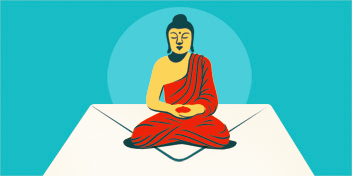Tricycle is pleased to offer the Tricycle Talks podcast for free. If you would like to support this offering, please consider donating. Thank you!
Feeling burnt out does not make you a failure. That’s the first thing Buddhist teacher and former tech executive Lawrence Levy would want you to know.
In a culture that places an outsized emphasis on success, people can end up working around the clock to get ahead—or more often nowadays just to make ends meet. But burnout is not a disorder, Levy says. Rather it’s a healthy response when our human needs aren’t being met.
As the former Chief Financial Officer of Pixar, Levy knows what it means to have a demanding job. He played a large role in transforming Pixar from a money-losing graphics company into a publicly traded media giant, which he discusses in his book To Pixar and Beyond: My Unlikely Journey with Steve Jobs to Make Entertainment History. But it was during his many years practicing in the Gelug lineage of Tibetan Buddhism that Levy began to find a way to apply Buddhist principles to the difficulties that we face in our everyday lives—such as burnout. That’s part of the reason why Levy joined his teacher Segyu Choepel Rinpoche in co-founding Juniper, an organization devoted to making meditation and the dharma accessible in a modern context.
Related: Why Former Pixar CFO Lawrence Levy Walked Away from It All
One of the Buddhist teachings that Levy found to be particularly pertinent is the idea that suffering can arise when our life narratives are not in sync with the way things actually are. Prevailing narratives prioritize cognitive intelligence over emotional intelligence, certainty over open-mindedness, and striving for perfection over acceptance. But these beliefs can cause us to minimize the value of our inner lives and spiritual yearnings.
Here, Tricycle Editor and Publisher James Shaheen talks to Levy about the importance of continuous self-care in a mutually supportive environment and how meditation, learning, and connection can help us tend to the conditions that lead to burnout.
Tricycle Talks is a podcast series featuring leading voices in the contemporary Buddhist world. You can listen to more Tricycle Talks on Spotify, iTunes, SoundCloud, Stitcher, and iHeartRadio.
Thank you for subscribing to Tricycle! As a nonprofit, we depend on readers like you to keep Buddhist teachings and practices widely available.
